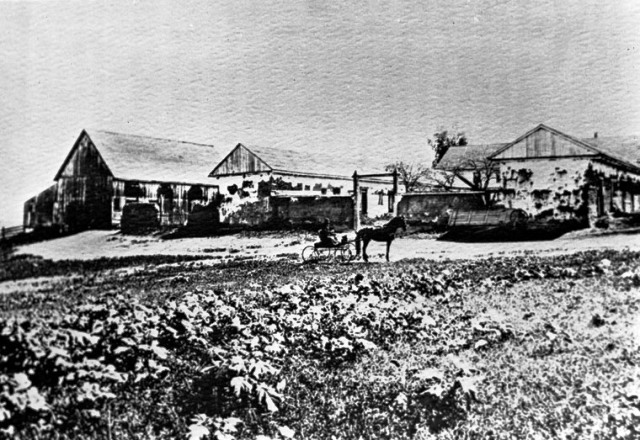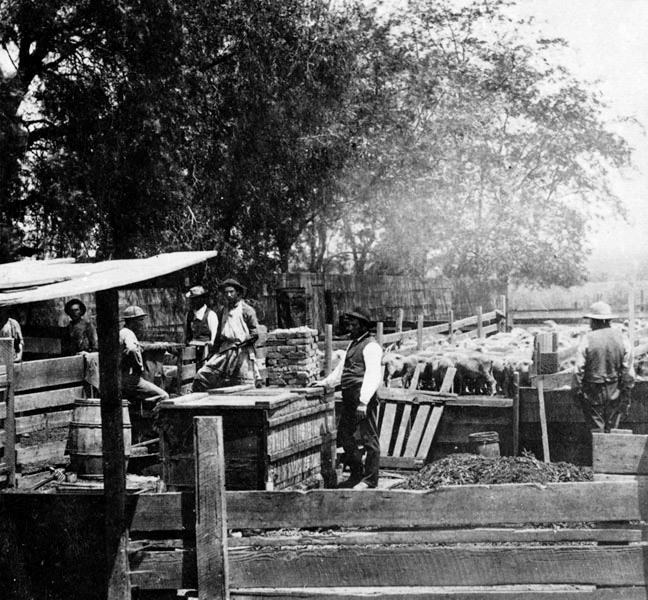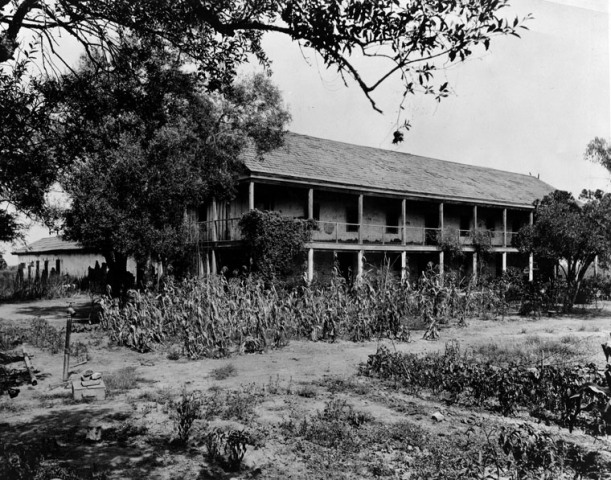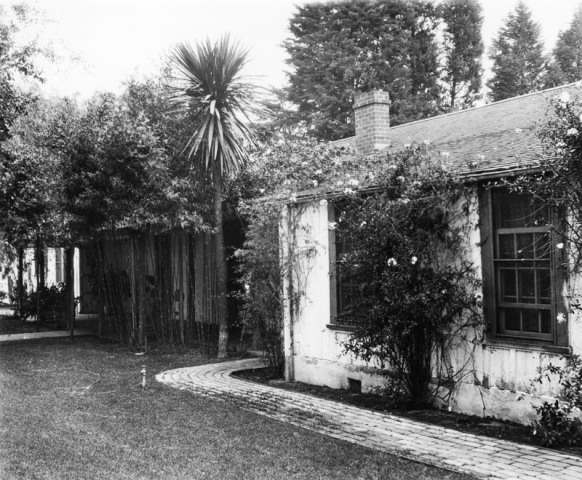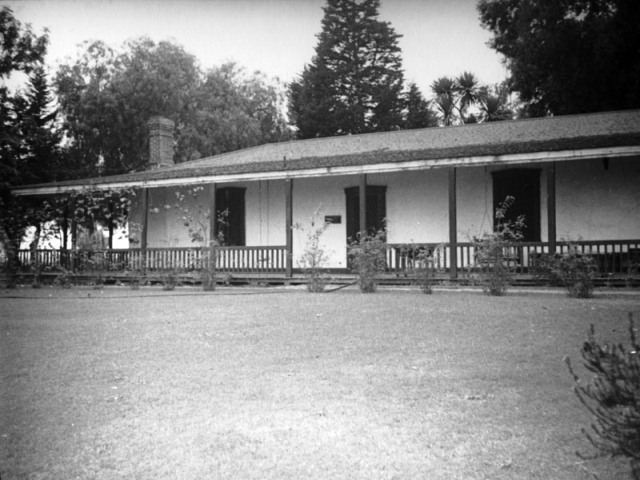Rancho Los Cerritos, c. 1890 (Security Pacific National Bank Collection, order# 00032266)
Rancho Los Cerritos and the Centinela Adobe are two of a number of historic landmarks dating to the age of the ranchos in Southern California. These historic sites are reminders of a time when Los Angeles was little more than a tiny pueblo with far flung agricultural outposts.
Today both are operated as heritage parks. As such they are nicely landscaped and staged to reflect the best of the rancho era. Images from the Los Angeles Public Library’s collection offer glimpses of a past that was as rough and tumble as it was romantic.
Rancho Los Cerritos (little hills) in Long Beach is a remnant of a 1786 land grant from the crown of Spain to its loyal leather-jacket soldier Manuel Nieto. The current adobe was constructed about 1844. After passing into American hands shortly thereafter, the estate transitioned from cattle ranching to sheep ranching. The image above gives a sense of the still desolate surroundings at the turn of the century.
Sheep dipping at Rancho Los Cerritos (Security Pacific National Bank Collection, order #00032263)
The American ranchers, the Bixby family, employed Basque sheepherders. This undated photo from the collection shows a flock of sheep readied for “dipping,” a time-honored method of ridding the animals of nasty pests in the fleece. The sheep were led one by one into a trough where they would be immersed in a noxious chemical bath. Despite concerns about damage to both humans and the environment, sheep dipping continues to be a standard practice in many places.
September 19, 1931. Rancho Los Cerritos Adobe, back view with gardens. At this date the home was still occupied by members of the Bixby family. (Security Pacific National Bank Collection, order # 00032265)
Today the Rancho is owned by the City of Long Beach and operated by the Rancho Los Cerritos Foundation.
Docent Laura of the Rancho Los Cerritos Foundation gave the author an excellent tour of the adobe.
About 1834 Ygnacio Machado built a home on his 25,000-acre rancho in the area already called Centinela Valley, a place where watchman (sentinals) kept a look-out for pirates along the coast. Some ten years after building the adobe, the lands of Rancho Aguaje de Centinela (the sentinel spring) were formally deeded to Machado by the Mexican government of Alta California. The rancho lands were used variously for cow pasture, sheep grazing, growing wheat and barley, orchards, and raising horses, and even as a riding academy.
Centinela Adobe, c. 1889. Note the hammocks swinging from the veranda posts. (Security Pacific National Bank Collection, order# 00019908)
Centinela Adobe from the front, 1927. The Adobe, with additions, was a private residence at the time of this photograph. (Security Pacific National Bank Collection, order #00019909)
The Centinela Adobe, c. 1937. Schultheis earned fame as a photographer and technician employed in Walt Disney’s special effects department. (Herman J. Schultheis Collection, order #00097850)
Today the Centinela Adobe is operated by the Historical Society of Centinela Valley and owned and maintained by the City of Inglewood. In a geographical twist of fate, the adobe considered the birthplace of the City of Inglewood is actually located just outside the city boundary in the Westchester neighborhood of Los Angeles.
Centinela Adobe today. Entrance to the park is from the back of the adobe, pictured here. The front faces directly onto the 405 Freeway, built in the early 1960s.
Despite the great difference in size, these adobes share a number of features. Covered porches, thick adobe (mud brick) walls punctuated with wooden frame doors, deep-set windows, patios, and hanging lights fixtures. Each has undergone periods of improvement alternating with periods of decline. Each was rescued from possible demolition by preservation minded individuals in the 1950s.
Both sites are open to the public during published hours.
http://www.cityofinglewood.org/depts/rec/centinela_adobe/
http://www.rancholoscerritos.org/
In future posts we will visit more adobes and heritage sites in Los Angeles County.
Sources for this essay include visits to the sites, various websites, and the following:
Iris H.W. Engstrand, Rancho Los Cerritos, A Southern California Legacy Preserved, 2009.
“Centinela Adobe Docent Tour Information,”1972, typescript in the possession of Westchester-Loyola Village Branch Library, Los Angeles Public Library.

